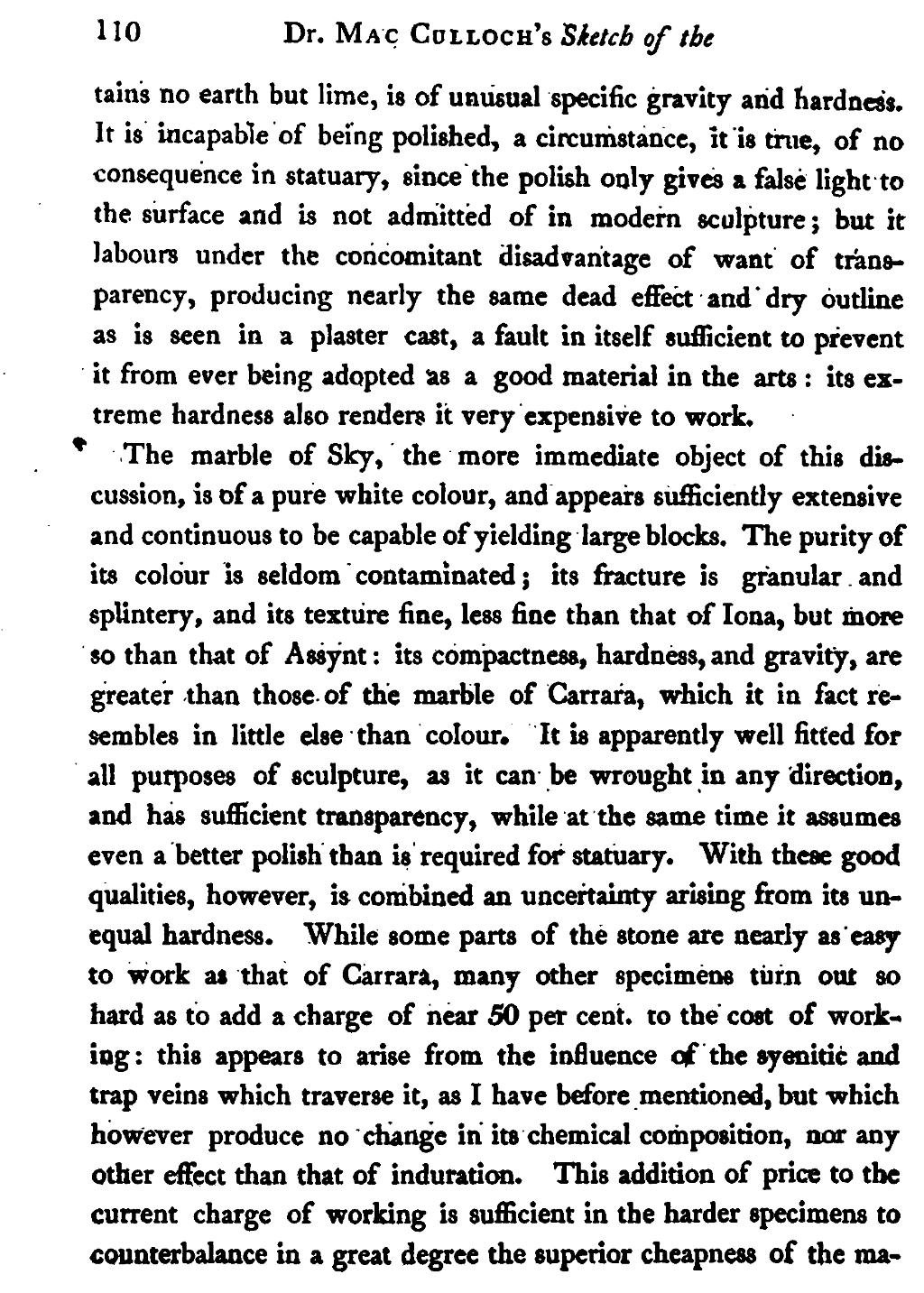no earth but lime, is of unusual specific gravity and hardness. It is incapable of being polished, a circumstance, it is true, of no consequence in statuary, since the polish only gives a false light to the surface and is not admitted of in modern sculpture; but it labours under the concomitant disadvantage of want of transparency, producing nearly the same dead effect and dry outline as is seen in a plaster cast, a fault in itself sufficient to prevent it from ever being adopted as a good material in the arts: its extreme hardness also renders it very expensive to work.
The marble of Sky, the more immediate object of this discussion, is of a pure white colour, and appears sufficiently extensive and continuous to be capable of yielding large blocks. The purity of its colour is seldom contaminated; its fracture is granular and splintery, and its texture fine, less fine than that of Iona, but more so than that of Assynt: its compactness, hardness, and gravity, are greater than those of the marble of Carrara, which it in fact resembles in little else than colour. It is apparently well fitted for all purposes of sculpture, as it can be wrought in any direction, and has sufficient transparency, while at the same time it assumes even a better polish than is required for statuary. With these good qualities, however, is combined an uncertainty arising from its unequal hardness. While some parts of the stone are nearly as easy to work as that of Carrara, many other specimens turn out so hard as to add a charge of near 50 per cent. to the cost of working: this appears to arise from the influence of the syenitic and trap veins which traverse it, as I have before mentioned, but which however produce no change in its chemical composition, nor any other effect than that of induration. This addition of price to the current charge of working is sufficient in the harder specimens to counterbalance in a great degree the superior cheapness of the material,
